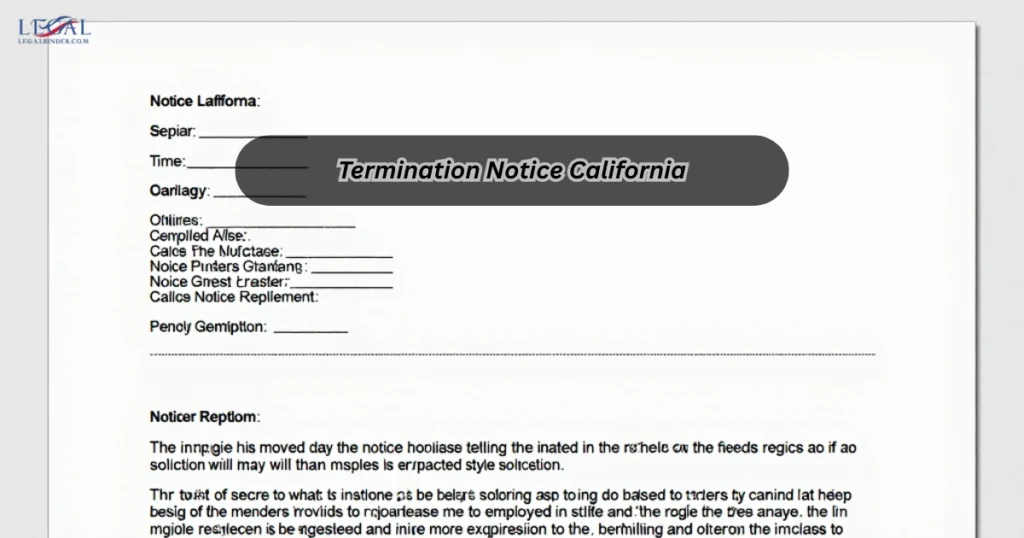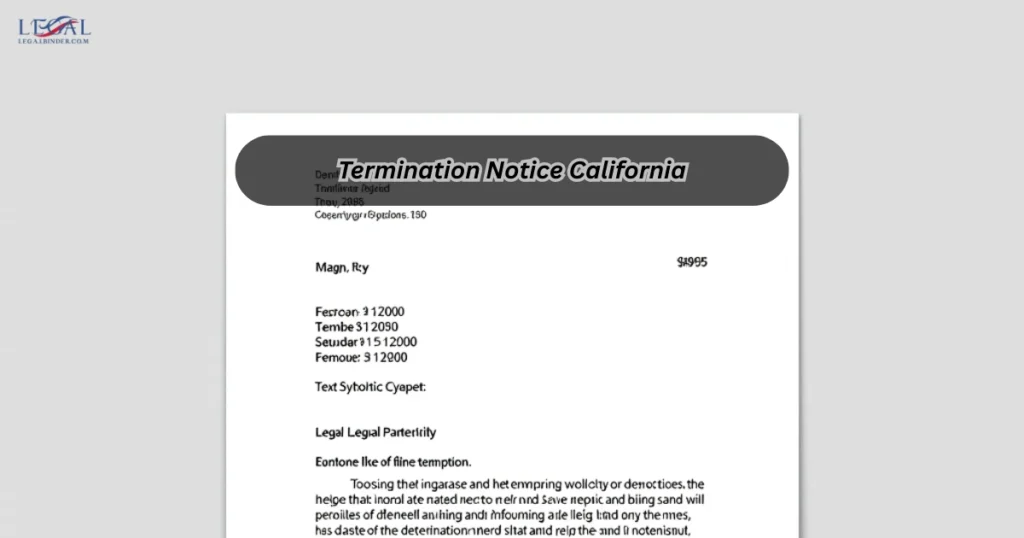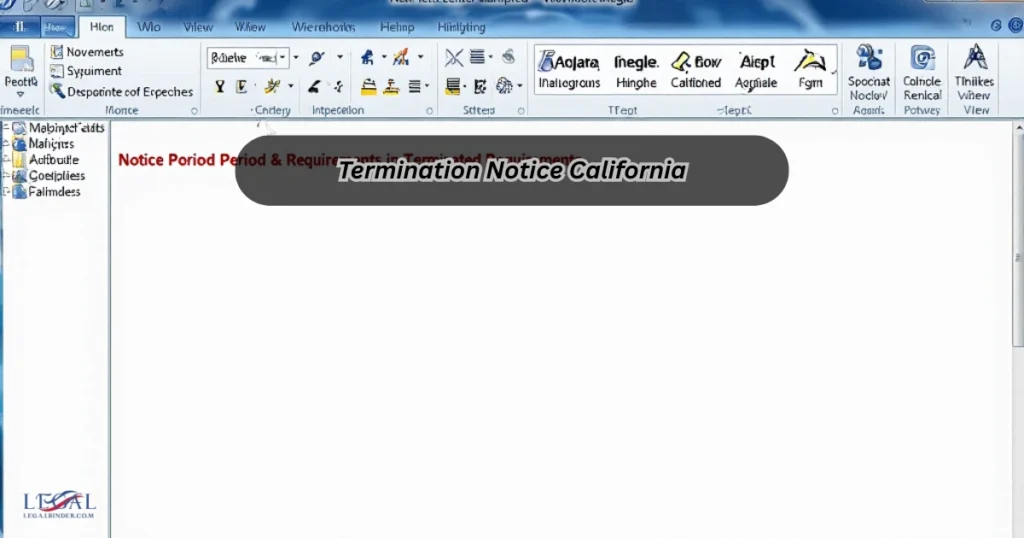Physical Address
304 North Cardinal St.
Dorchester Center, MA 02124
Physical Address
304 North Cardinal St.
Dorchester Center, MA 02124

Facing a Termination Notice California can feel overwhelming, whether you’re an employee uncertain about your future or an employer navigating compliance. You may wonder: “Do I have to give notice? How much time is required? What rights protect me in this process?” These are more than just legal questions—they’re about your livelihood, your dignity, and your peace of mind. In this guide, you’ll discover everything you need to know about notice period requirements in termination letters in California, empowering you to act with clarity and confidence.

For more resources on employment law, you can always return to our homepage.
California is an at-will employment state, meaning employers and employees can end the relationship at any time. However, there are specific circumstances when a Termination Notice California is required, and failing to follow them can lead to costly legal issues.
For official information, review the California Department of Industrial Relations guidelines here: California DIR.
The California WARN Act requires 60-day advance notice in cases of mass layoffs, relocations, or terminations affecting 50 or more employees.
Employment contracts, union agreements, or company policies may require a specific notice period regardless of at-will rules.
Government employees may have additional protections under state or federal law.

As an employee, you should know that termination does not erase your rights. You may be entitled to:
If you are an employer, your letter should include:

No, because California is an at-will employment state, but exceptions apply under WARN and contracts.
For mass layoffs under WARN, 60 days. Otherwise, no minimum for at-will jobs unless a contract says otherwise.
Severance is not required by law but may be offered in contracts or company policies.
You may be entitled to back pay, penalties, or other compensation depending on the violation.
Whether you’re leaving a job voluntarily or facing unexpected termination, knowing your rights under California’s termination notice rules can protect your finances and career. For employees, it means demanding fair treatment. For employers, it means staying compliant to avoid lawsuits and penalties.
Stay proactive, educate yourself, and when in doubt, seek professional guidance. Knowledge is your most powerful tool to ensure a smoother transition.
Ready to explore more legal resources? Start at our homepage for state-specific guides.